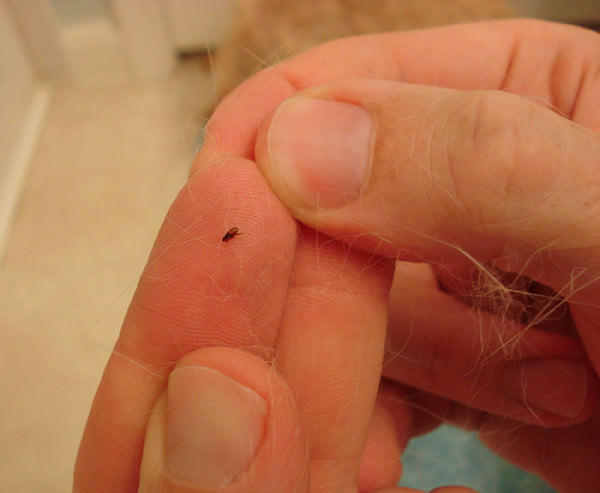Table of Content
Use diatomaceous earth to make your own natural flea powder. It’s so amazing that it also repels ticks, ants, spiders, mosquitoes, flies, and other bugs – all that with using only all-natural ingredients. This is one of the best home remedies to get rid of fleas! Put it into a shaker, you can sprinkle it safely in beds, stairs, pet beddings and in all the places where it is hard to treat. You’ll need a homemade Flea-Killing Upholstery Cleaner. As you know, if your pets have fleas, they’re likely on your furniture, too.

Grow it in your backyard for a handy supply, while repelling fleas at the same time. Look to mix the juice with cayenne pepper as an all-natural, non-toxic flea repellent either sprayed directly into the coat or combed through. Ensure you only use the clear juice; the milk is highly toxic. The salt may make those wounds sting and your dog won’t let you do it again.
Flea Prevention Tips for Dog Owners
For recommendations on effective flea and tick prevention, do your research and talk to your veterinarian. Baking soda does not kill adult fleas and will do nothing to protect your pets. Rubbing alcohol will kill fleas and ticks, but if you're going to use alcohol, make sure to use it correctly. Experts recommend dropping fleas or ticks into a glass or jar filled with rubbing alcohol. When should you treat your dog with flea or tick products?
Treating your dog is about as fast as you can get the following products out of your cupboards. It is safe to use, and you can mix the baking soda with salt to give it more potency. The key to putting it on your dog or dogs is to make sure he or she does not have any open cuts, scrapes, or wounds. If enough cedar oil is ingested, say from a dog licking his skin after being treated, it can cause liver damage. Even breathing in small droplets of cedar oil may lead to lung problems. Just like with garlic, using vinegar to kill fleas is not recommended because it is unsafe and doesn’t work.
Coconut oil
It can be challenging to pinpoint where the cat gets fleas. Typically cats can get fleas from kennels, groomers, another cat , even from an existing infestation in the home or outside. Fortunately, there are a number of home remedies that can help you get rid of fleas on your cat quickly and safely. Signs that your pet has fleas include itching, flea "dirt" that looks like tiny black dots in your pet's fur, and bumpy or red skin.
Learn the secrets your pet’s groomer won’t tell you. Another great way to use spices is to mix them with lemon juice or lime juice. Not only will this mixture help repel fleas, it will also kill them off because citrus kills them.
Make a Flea Trap Using Dish Soap
And with regular treatment, you can prevent them from ever coming back. Try one of these solutions today and see for yourself how effective they can be. For many pet owners dealing with a flea is not only an everyday struggle but also unsuspecting felines as well. Fleas are small dastardly things and mighty so that they can reproduce quickly and easily spread on house or cats. When you notice that your cats tend to be quiet sufferers, it’s especially important to enlist in home remedies for fleas on cats without bathing.
Make sure you follow the vets recommendations on bathing frequencies as it may vary per breed. For example, my poodles get bathed once per week which is what is recommended. If you are curious about how to prevent fleas from coming into the home in the first place, then read the following. Cut the fabric and place them together, inside out. To make a sachet, sew all but one side of the fabric and invert it.
ABC Can Resolve Your Flea Problems
You can repeat both treatments daily for as long as needed. If your cat won’t allow you to apply topical treatments to his or her fur, you can try mixing a small amount of cumin into your cat’s food. The spice will make your cat’s skin become very unappetizing to fleas. To better understand and address a flea problem, it’s helpful to learn more about the flea life cycle. The length of a flea’s life cycle is influenced by temperature and moisture. Ideal conditions are around 85 degrees Fahrenheit and 85 percent humidity.

At Treehugger, we are advocates of animal welfare, including our pets and other domestic animals. The better we understand our dogs and cats, the better we can support and protect their wellbeing. We hope our readers will adopt rescue pets instead of shopping from breeders or pet stores, and will also consider supporting local animal shelters.
Always check with your vet before trying a new remedy for your pet. Whether you opt for white or apple cider vinegar, this common household ingredient features acetic acid which can destroy flea eggs, while the aroma repels adult fleas. Topical preventives, flea collars, flea shampoos, oral treatments, sprays and combs. Diatomaceous Earth- This product works like baking soda and salt. All you have to do is sprinkle it around your home making sure to get the carpets, furniture, floors, bedding, and everywhere else fleas may be hiding. The polyunsaturated fatty acids in coconut oil can reduce inflammation and help support cognitive function in pets.
Flea prevention and treatment are important because the blood-sucking insects can carry life-threatening diseases like heartworm, Lyme disease, and tapeworms. Olive oil is completely non-toxic to cats so even if they look to lick it off, you can apply it on its own without a problem. Simply rub the oil into the fur, leave it in for a few hours and then rinse or comb it out. Oregano oil can be used to deter fleas, but it's best to heavily dilute it. While it contains a natural ingredient called carvacrol which helps repel fleas, it also features phenols which can be bad for cats. Flea and tick prevention now comes as a chewable tablet, topical solution or collar.
If fleas can live for years under some conditions without a blood meal, does that mean that fleas can live on our bodies? While humans can serve as a temporary host for cat fleas, cat fleas produce more viable eggs if they feed on the blood of a feline. Cat fleas don’t necessarily require a cat to survive, since this parasite can also feed on the blood of dogs, opossums, foxes and rats.


No comments:
Post a Comment